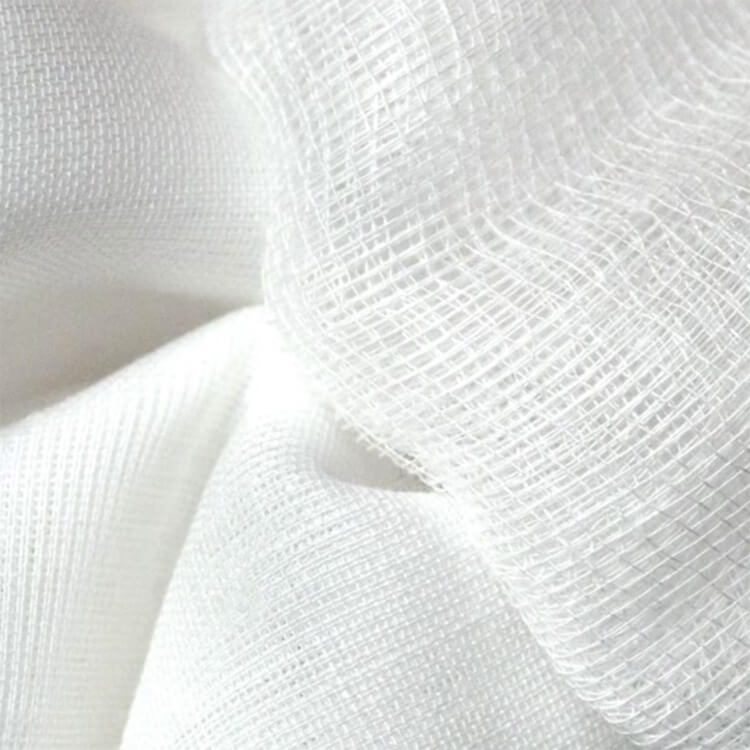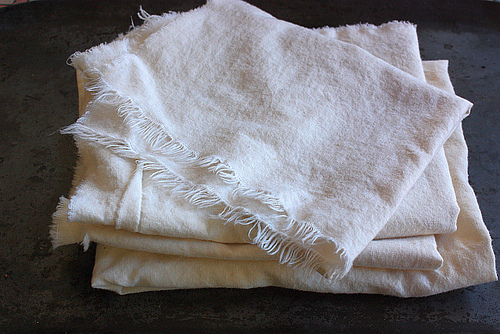Can I Wash And Reuse Cheesecloth?

Cheesecloth is a woven cotton fabric with small holes that allow air to flow, similar to gauze. It’s used in cheese making to keep the cheese safe while it ages while also allowing it to breathe. If the cheesecloth isn’t labeled as “one-time-use,” you can even reuse it.
It’s also used to drain the liquid from cheese curds. They can’t be formed into wheels and left to age if there’s too much moisture. The cheddar cheese, also known as wrapped or bandage cheddar, is one of the cheeses wrapped in cheesecloth during aging.
Ricotta, goat cheese, farmers’ cheese, tofu, ghee, and other cheeses can all be made with cheesecloth. You may also strain the stock, soup, nut milk, yogurt, and juices using it. Always purchase high-quality cheesecloth that can be cleaned and reused multiple times when purchasing one for yourself.
Cheesecloths that are ultra-fine and firmly woven are ideal for manufacturing cheese. They’ll keep the cheese curds in place as they’re separated from the whey. Avoid using low-quality cheesecloth with a one-time use label since it will break down after the first usage, requiring you to purchase another.
Is it possible to wash and reuse cheesecloth?

The cheesecloth can be washed in the washing machine or by hand and then be reused.
To wash by hand, first, remove any little pieces of cheese or other leftovers from the cheesecloth and carefully rinse it.
Soak the cheesecloth in a gallon of boiling water with half a cup of baking soda for 10-30 minutes. You will remove all the stains if you rinse the cheesecloth.
If your cheesecloth has any stubborn stains, soak it in 1 gallon of boiling water for 30-60 minutes with 14 cups of lemon juice or white vinegar and half a cup of baking soda. Rinse it thoroughly until all of the vinegar or lemon has been rinsed away.
You can also wash high-quality cheesecloth in the washing machine. Use a gentle detergent free of fragrances and hot water for sensitive materials. It would help if you did not use fabric softeners because they can impart an odor to your food.
After each use, you can boil your cheesecloth to disinfect it and keep it free of bacteria. Bring a kettle of water to a boil, add the cheesecloth and let it simmer for 10-15 minutes.
Rinse and dry the cheesecloth in a dryer or direct sunshine. Fold it up and store it in an airtight plastic bag in a dry and fabulous location until the next time you need it.
Is it necessary for me to clean the cheesecloth?
After each usage, you must clean the cheesecloth.
You can wash the cheesecloth in the washing machine or by hand. If you don’t have time, soak it in hot water for a while and then wash it. It would be best if you used cold water to remove any minor residues.
But don’t forget to dry it because mold can form on damp cheesecloth and ruin it. If your cheesecloth is labeled “one-time-use,” you can wash it by hand, but it will shred after one or two washes.
Is it possible to reuse cheesecloth for cold brew?
One can reuse cheesecloth for cold brew. You’ll need to filter the liquid after soaking the ground coffee beans in cold water for roughly 12 hours.
Cover the container with a cheesecloth and pour the coffee over it. Remove the leftover coffee from the Cheesecloth by rinsing it with cold water and then washing it with hot water. Rinse it thoroughly and dry it before reusing it.
What can you do if you don’t have cheesecloth?

In terms of detail, butter muslin, fine-mesh bags, flour sack towels, large handkerchiefs, fine wire sieve, coffee filter, and pantyhose work well.
No. 1 Use muslin that has been brushed with butter.
Butter muslin is also used in cheese making because of its tight weave and ability to hold little curds. The soft and moist cheeses can retain some moisture and cheese fats because of the butter muslin’s tighter weave.
Butter muslin is also more challenging to clean since minute pieces of curds, tastes, and aromas can easily attach to it. In addition, it is more costly than a cheesecloth. It’s also widely available in clothing stores.
It should be rinsed and washed with hot water and a mild detergent as soon as possible after each usage. Rinse it well, dry it, and keep it in a plastic zipper bag until the next time you need it. One can clean it similar to how you clean a cheesecloth.
After each usage, boil the butter muslin for about five minutes to sterilize it and prevent infection with hazardous microorganisms.
No. 2 Bags with fine mesh
Fine-mesh bags are typically constructed of nylon and come in various sizes. They’re used to strain nut milk and alcohol, as well as to do laundry and paint.
Stain-resistant fine mesh bags are easier to clean and last longer than cheesecloth. They can be washed in a machine or by hand and reused multiple times.
No. 3 Towels made with flour sacks
Flour sack towels are composed of cotton and can be used in the kitchen in various ways. They feature tight waves and can be used to strain the place of the cheesecloth. Like Cheesecloth, flour sack towels can be cleaned and reused several times.
No. 4 Handkerchiefs of a large size
Linen, cotton, and synthetic fabrics are used to make large handkerchiefs. They are inexpensive, easy to clean, and reused multiple times. After each usage, wash them with hot water to keep them clean and safe for the next time you use them.
No. 5 Sieve with fine wire
One can use a fine wire sieve instead of cheesecloth to filter various foods and fluids. You can filter cheese, broth, juice, or soup, but it won’t collect minor pieces of the food. Rinse it with hot water after each use, and it is ready for the next.
No. 6 Filter for coffee
Coffee filters, both disposable and reusable, work well as a substitute for cheesecloth. Because they were designed to strain the minute coffee bits, they would strain any liquid or food.
If the coffee filter is reusable, take care to clean it after each use so you may enjoy your coffee without any unpleasant odors.
No. 7 Pantyhose
One can use a pair of new pantyhose in place of cheesecloth. Stretch them over a basin and sieve the cheese, juice, stock, or whatever else you like.
Because they have a fine texture, they will catch even the most minor parts and produce neatly strained food. You’ll need to strain something once you’ve used the wash and saved them for the next time.
Final suggestions

You can save money by using whatever you already have at home. You must filter cheese, fruit juices, and jams if you produce them at home. As a result, you can use cheesecloth or one of the alternatives listed in this article. You can also buy butter muslin and keep it for a more extended period if you clean and store it properly. It’s all up to you.











